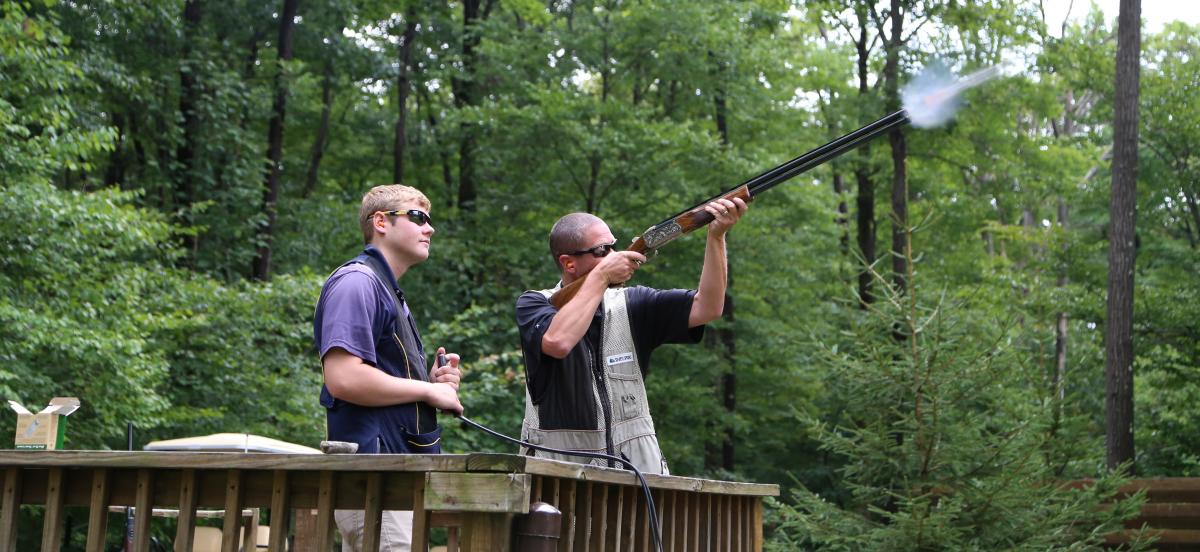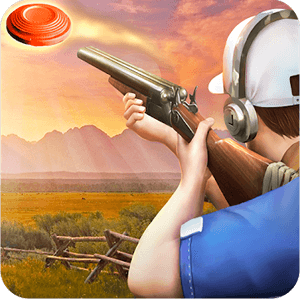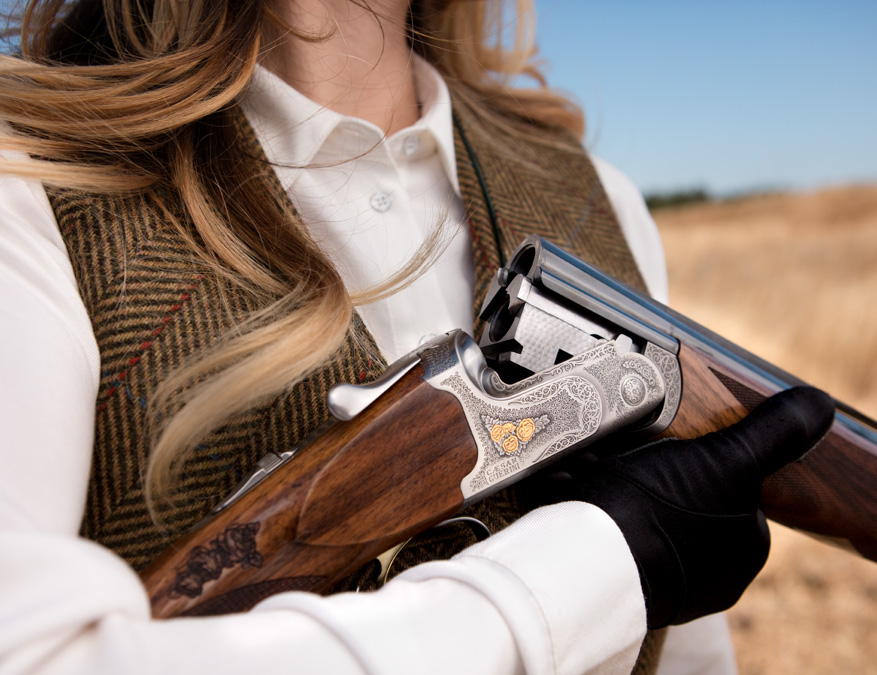
Before deciding to get into trapshooting, you should learn some basic rules. Trapshooters begin with singles 16 yards in length. While you wait for your turn, you can keep one live shell in your gun and then move on to the next stand with an empty gun. Trapshooters are known for being a bit aloof towards newcomers, so this can be intimidating. This can have a negative impact on your concentration, shooting rhythm, or score.
Sporting-clays guns weigh less than trap and skeet gun
These types of gun are a lightweight alternative to traditional traps and skeets. These guns are often shaped differently from trap and skeet guns. Traps usually contain multiple targets. Traps on the other side are designed to withstand repeated usage over several days. They are lighter than other guns and can be used to hunt with a companion.

Targets are thrown at random angles
Trap shooting has three major disciplines: singles (doubles), and squads. Singles shooters are placed sixteen yards from the center and fire at randomly-thrown targets at random angles. Five shooters make up a squad. They rotate between four positions that are three feet apart. In a series of rounds, singles, doubles and squads compete against each other.
It is important to place your eyes correctly when shooting traps
When shooting traps, the eye placement of the shooter is a critical element in getting the desired result. The trap house, also known as the target, rotates randomly so shooters will need to be able to follow the target's movements with their eyes. Divergence, tracking and identification will allow shooters to locate the target in the distance. These skills are crucial for accuracy shooting and will make all the difference in your success.
Rules of the game
There are various rules and regulations regarding the game of trap shooting. Two basic types of shooting are report and true couple. Report shooting is the practice of shooting one target or a true pair with another person. The shooter must enter a designated cage where he can shoot the targets. The pair shooting competition is actually a group activity. The squad leader is permitted to shoot one to two show birds. This person will then call out the targets.
Equipment required
The following items are required if you are interested learning how to shoot trap. A gun is not enough. Trap shooters also require eye and ear protection. Trap shooters typically use 12-gauge target loads with no. 7 1/2 or eight shot, however you can use any shop-bought load. Many competitive shooters prefer trap-specific loads. Some also hand load their ammunition.

Getting started
You must adjust your eye line before you can start shooting trap. Do not stare at the shotgun ribs. Instead, focus on the trap house's edge. Instead, you should look approximately twenty yards away from the trap house and loosely concentrate on the debris. This will put your target in front of you. This will allow you to see clearly and help you get the highest scores possible. Next, ensure your gun is responsive and balanced.
FAQ
What guns can you legally use?
There are many different types of weapons you can use while hunting.
Hunters use shotguns, rifles, handguns, as well as muzzle-loading firearms.
Rifles are made to fire bullets over long distances. Shotguns are loaded with pellets. Handguns are made to fire bullets through your hand. Muzzle-loading firearms look similar to modern pistols.
Crossbows can shoot arrows. Archery weapons are also known as bowhunters.
Hunting with a crossbow requires special training. First, learn how you can aim and shoot the weapon.
What is the most important thing about hunting animals?
How do we get there The first step is to learn how to shoot accurately. Then, it is important to know how to hit the target. And finally, we must learn how to make adjustments when we miss.
Knowledge is key to hunting. If you don’t understand the basics of hunting, you won’t be able to improve. Although you might believe you have improved your shots because you are better, if you don't know how to do it before, these shots won't matter. This holds true when it comes to hitting targets. If you don’t understand the reasons you’re missing, it will be difficult to improve. This means that you must know what you are aiming for.
Knowledge is key. Your ability hunt depends on how well you know the animal you want to kill. If you go out into nature, you will want to be as knowledgeable as possible about the animals you come across. It is important to understand their habits, behaviors, and personalities. You will be able to plan your hunts efficiently and smoothly.
It is important to always learn from other people who have achieved success in the past. There are many books available on this topic. In addition, there are websites like www.thehuntingzone.com that offer great tips and advice. There are also people with years of experience. They can help identify the best and worst practices.
After you have learned all you can, it is time to put your knowledge into practice. Practice makes perfect. Practice is not enough. Instead, practice until you feel confident. Confidence helps you relax and enjoy the process. Relaxation can help you focus on the task in hand. You can capitalize on every opportunity that comes your way by concentrating. Opportunities are only available when you're calm and focused.
It's time for you to test your new skills. You don't have to fail. Don't worry if you fail. Just keep practicing. Eventually, you'll find success.
Is hunting dangerous?
Yes, hunting can cause injuries.
There are many ways to injure your self.
Poor shooting techniques can be one of the reasons. One example is improper shooting techniques.
A second risk is that another animal may attack you.
Every year, there are many hunting accidents. Guns are responsible for many people being killed or seriously hurt.
Hunters should always keep their guns unloaded until they have reached their destination.
You should ensure that your guns are unloaded before you go into the woods.
Always keep your eyes wide open. Watch where you step and listen for sounds.
Do not approach any animals unless you are prepared to defend yourself.
Never chase after prey. Instead, wait patiently and they will come to you.
Never take shortcuts. They could result in injury or death.
Be aware of cliffs, and other places that you cannot see down below.
Avoid streams and rivers. These areas can flood suddenly.
Avoid drinking alcohol while you are hunting. It can affect your judgment and slow down your reaction times.
Keep all safety equipment close at hand. Always carry a first-aid kit and flashlight.
Knowing how to respond to an emergency is crucial. You don't need to know how to do CPR or first aid. Find someone who does.
Statistics
- Over the past 50 years, the number of hunting licenses in California has been on a rapid decline, falling 70% from more than 760,000 in the 1970s to under 268,000 in 2020—even as the state's population has skyrocketed, according to The Mercury News. (stacker.com)
- According to the Wildlife Restoration Act, passed in 1937, most of the state conservation efforts are funded through hunting and fishing license sales and firearms sales. (stacker.com)
- Indiana, for example, saw a 28% jump in turkey license sales during the first week of the season. (stacker.com)
- - Percent of residents with paid hunting licenses: 0.7%- (stacker.com)
External Links
How To
How to pick the best hunting spots in the forest
Knowing what kind of game you wish to hunt is the first step in hunting. There are many kinds of animals and birds that live inside forests. Each species has its own habitat requirements. You won't find any area where you can catch them.
There are two main categories of animals that inhabit the forest: large mammals and small ones. Large mammals include deer and elk as well as moose, caribou bear, wolf, and wild hare. The smallest animals are rabbits (squirts), squirrels, hares and partridges. Each species requires its own specific habitat, so you must choose the right location before going out into the woods. You can find information about endangered species within your locality by visiting the flora or fauna list. You should ensure that you are not poaching in the area where you intend to hunt a particular species.
Knowing how to properly setup your equipment is essential if you plan to hunt a particular animal. Use the right equipment to maximize your chances of success. For example, if you're hunting a rabbit, you'll need a gun that shoots accurately at close range, while if you're hunting a larger animal such as a deer, you'll need a rifle capable of shooting long distances. You'll also need some bait to attract your prey. Some prefer to place meat inside a trap, while others prefer peanut butter or corn. No matter what method you use, you must adhere to the laws and regulations in the country you are hunting.
When choosing a hunting spot, you'll need to consider several factors including the weather conditions, terrain, vegetation, wildlife population, and accessibility. Safety is the main consideration when hunting. It is important to choose a safe hunting area that is free of predators and other dangerous animals. Also, avoid hunting areas that are crowded, especially during hunting season. Also, it is important to keep track of the seasons while hunting. This will help you figure out the best times for you to hunt.
It is important to consider the weather when selecting a hunting area. It is important because it can affect the number or animals that will be there. During winter, the temperature drops below zero degrees Celsius, and snow covers the ground. Deer, bears, wolves, and coyotes tend to hide under the thick layer of snow, making it difficult to track them down. If you are lucky enough to have clear skies, you may be capable of seeing these animals. On the other hand, in summer, the temperatures rise above 30 degrees Celsius, and the sun warms the earth. To escape heat, animals seek shelter. This makes it easier to locate them.
Be aware of the terrain. It is easier to walk or run on a flat surface, but it can be difficult to do so on uneven surfaces. Steep slopes are harder to climb, and rivers and streams often cause muddy trails. So that you can navigate the area easily, try to find a spot without any obstacles.
Look at the vegetation, as well. The environment can affect the size and density of plants. Large trees provide shade for small animals while shrubs, bushes and bushes offer cover and shade. You should search for dense vegetation if you wish to find large animals.
The amount of wildlife should be taken into consideration. According to statistics, there are more than 100 million deer in North America alone. They eat more than half the food that crops produce, and they are vital to biodiversity. However, if the population grows too big, they could become pests and damage the ecosystem. Therefore, it's important to keep the population balanced.